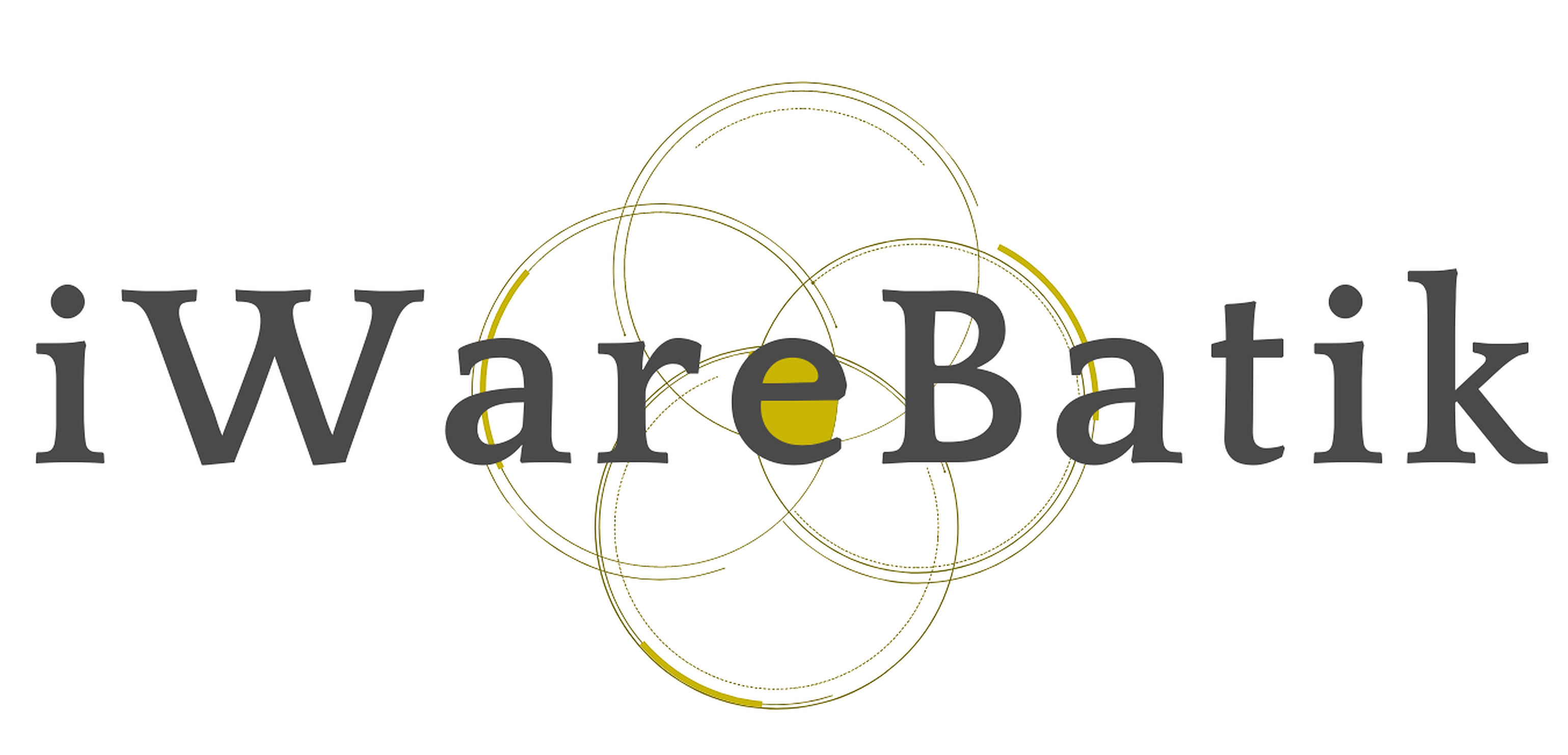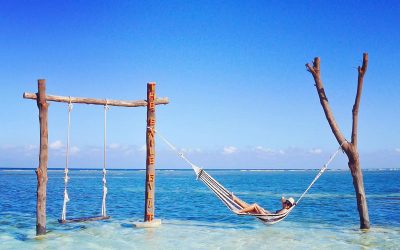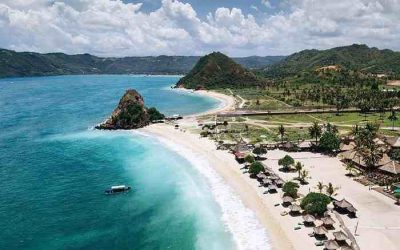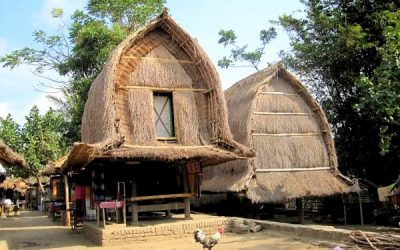Home / Batik Regions – Eastern Indonesia – West Nusa Tenggara / Sukarara Textile Villages
Cultural Destination
Embrace the spirit of the place!
Sukarara Textile Villages

Sukarara Textile Village in Lombok (photo: Mandalika.Indonesia)
Sukarara Textile Village
Before the rise of Batik textile, local communities in West Nusa Tenggara produced woven textiles for their customary outfits. Located about 40 kilometers from Mataram capital city in Lombok island, this village is known for its flourishing weaving industry of Sasak indigenous tribes since before century. The villagers will enchant you with their production of fine woven cloths by using cotton, silk or gold and silver threads for their amazing designs.
Tourist Attractions in West Nusa Tenggara
Gili Trawangan Beach
Do you ever imagine to get exiled on the beach with brilliant white sand and blue crystalline water?
Rinjani – Mandalika UNESCO Global Geopark
The legend says that the beach of Mandalika is the site where the Princess of Mandalika sacrificed
Sade – Bayan Lombok Cultural Villages
Famous for its cultural destination, Lombok island of West Nusa Tenggara enchants
West Nusa Tenggara Batik Motifs
Daun Sirih
This motif illustrates betel leaves that are used by Lombok communities as traditional
Bale Lumbu
This motif signifies the welfare of the ancient Sasak society. Bale also symbolizes the
Tenun Bima
The motifs are adopted from Bima woven textile. This pattern has received a great
Discover
Indonesian
Batik
Motifs
Daun Lada Hitam
The black pepper motif represents the main commodity of Bangka Belitung
Gumin Tambun
Based on Hindu mythology, this motif symbolizes lucks, abundant wealth, and
Tabir Tanjung
Tanjung flower is a type of Cherry tree flower, which is commonly found in
La Galigo
La Galigo is a literary work of the Buginese Epic that has 300 thousand epic lines. It is considered even
Tampuk Manggis Sasirangan
The motif illustrates the philosophy of the mangosteen fruit, which is
Lok Baintan Floating Market
As you can imagine, the most authentic thing is that you can buy things and even
Bomba Mawar
This motif means sacred love for family, kingdom, and God; It also illustrates
Honai
The Honai is inspired by the traditional house of the Papuan community living in
Bintik Tujuh
The Bintik Tujuh (Seven Dots) motif has 7 white spots and green color gradation as
Jumputan Bintang
The word Jumputan means the tie-dye technique, while the word “Bintang” refers to
Gigi Haruan Lidi
The Gigi Haruan Lidi motif is taken from the name of the cork fish and is a symbol of
Kaganga Tanah Rejang
If Batik Besurek combines Arabic calligraphy motifs, then the Kaganga batik takes
Parang Seling
Parang Seling or “alternating daggers” is a royal batik motif. It is a feminine variant of
Dayak Kamang
Kamang motif is generally found in the Dayak tribe shield because it is believed to
Gonggong Siput
Gonggong (Strombus Turturella) is one type of sea snail found around
Singayaksa
The Singayaksa motif comes from the name of a place where Sultan Hasanuddin used to
Besurek Rembulan
This batik illustrates praise for God who created the wonderful universe
Besurek Rafflesia
The term “Basurek” refers to a textile that contains letters or inscriptions
Jupri Kembang Teh
Kembang Teh illustrates the tendrils of tea plants that grow in the highlands of
Karawo Pinang
Pinang refers to the Palm areca tree. This motif is considered as the original
Sandeq
Sandeq Boat is a symbol of the maritime importance of the West Sulawesi region. The greatness of
Durian Pecah
Broken Durian motifs depict the foundation of faith. The second half signifies the mastery of
Pinawetengan
The Pinawetengan Batik pattern was taken from a prehistoric inscription in
Daun Simpor
This motif is inspired by the Simpor plant (Dillenia Suffruticosa) which is a typical
Gorga Simeol-Meol
The Gorga Simeol-meol is a pattern of plant tendrils. it is regarded as a symbol of longevity and
Sero Tangga
The Sero Tangga illustrates an endearing feeling and sacrifices of a person to fulfil
Gentala Arasy
Built as high as 80 meters, the tower also highlights the historical side of
Pattimura
Pattimura is the name of an Indonesian hero who fought against colonialism in
Bekantan Pakis
This motif represents Pakis Haji (Polystichum setiferum), an endemic plant in
Kaharingan
The Kaharingan or ‘tree of life’ based on the Dayak tribes’ belief system. This tree symbolizes
Gamolan
This motif illustrates Gamolan, a bamboo musical instrument of Lampung that is
Tikar Natuna
The Tikar Natuna motif is adapted from the traditional making of pandanus mats in
Teguh Bersatu
This batik motif shows the strength of the people of Kupang. It also represents a sense of
Kawung
The Kawung motif was created by Sultan Agung Hanyokrokusumo (1593 – 1645) as a symbolic gift for
Parang Rusak
Another meaning behind this motif is an unconquerable spirit, symbolized by
Rangkiang
The word “Rangkiang” refers to the rice granary in the Minangkabau language. It symbolizes
Keluak Daun Pakis
The word “Keluak” is a Minang language which means twisted or tangled. The Motif of
Kasih Tak Sampai
‘Kasih Tak Sampai’ is an idiom in the Indonesian language which refers to
Pala Salawaku
This motif illustrates the unique weapons of the Maluku region, namely
Burung Bidadari
Bidadari birds are endemic birds in Halmahera. This motif represents an
Ikan tambal
The word “Ikan” refers to fish. The philosophical meaning of Ikan Tambal means is
Tifa Totobuang
The batik motifs illustrate Maluku’s traditional music instrument called
Dayak Taghol
Dayak Taghol has a distinctive style of four curved lines and small dots. This motif represents
Sekar Jati
Sekar means flower and Jati refers to teak trees that symbolizes a strong mental character that
Insang Ikan
Insang refers to the gills of the fish. This is a typical pattern of Malay ethnic who inhabits
Mahkota Siger
Siger is the crown of a noblewoman in ancient time. It is a symbol of femininity, strength, and
Gedhog Kembang Waluh
a combination of Javanese cultural motif of the Majapahit kingdom (XII-XIV century) with
Kuda Kupang
Horses symbolize wealth. It contains noble values of virtuous characters that bring
Buketan Bali
The Balinese bouquet (Buketan Bali) is a floral arrangement and the name is
Merak Ngeram
The hatching peacock motif has a very deep meaning which refers to the sacrifice and
Manguni Minahasa
Manguni is identified as the symbol of the Minahasa people. Manguni is known as a
Gonggong Beruntun
This motif illustrates that a person should maintain a positive attitude and
Sekomandi
Its philosophical meaning is the eternal union which refers to a saying “until death do us part”
Gajah Way Kambas
The motif illustrates the Lampung’s natural reserve, the Way Kambas. it also symbolizes
Lipaq Sabe
Lipaq Saqbe contains a simple geometric classical motif with various flower decorations. This textile is
Pohon Hayat (Tree of Life)
The Batik motifs in Lampung are dominated by the acculturation of Buddhist and
Enggang Dayak
Local people beliefs that hornbills are an incarnation of the Commander of the Birds. It has supernatural
Wirasat
Wirasat or divine inspiration is a gift from God. This inspiration is symbolized by
Paqbarre Allo
The word “Barre” means round and “Allo” means the sunlight. This motif is interpreted as
Lontara
The Lontara script itself is a typical ancient script of Bugis and Makassar communities. History records that
Bultiya
The word ‘Bultiya’ is an acronym of the three major tribes in North Kalimantan, namely
Ukir Sentani
The Ukir motif is a batik motif that is inspired by various traditional Sentani wood carvings
Tanah Liek
The word “Tanah Liek” refers to clay in Minang language. It is also known as
Tongkonan
Toraja’s traditional house is called Tongkonan. Tongkonan is a place for
Tengkawang Ampiek
With its many advantages, the Dayaks use this leaf in ritual ceremonies. This plant is a symbol of
Rumah Mamuju
the Batik motif illustrates the house of Mamuju King with the stairs, located on the left of the wooden stage house
Bale Lumbu
This motif signifies the welfare of the ancient Sasak society. Bale also symbolizes the
Tubo Kelapa
Coconut tree is a symbol of a good character and strong mentality. It illustrates the more success a person, the more
Gurdo Solo
Gurdo or garuda bird is the mount of the Indian god Vishnu. As the Sun Bird,
Sido Mulyo
Sidomulyo is one of the classical motifs, which is specifically used for the bride’s costume in
Karawo Mahkuta
Mahkuta refers to Gorontalo’s traditional crown. It represents noble characters of





